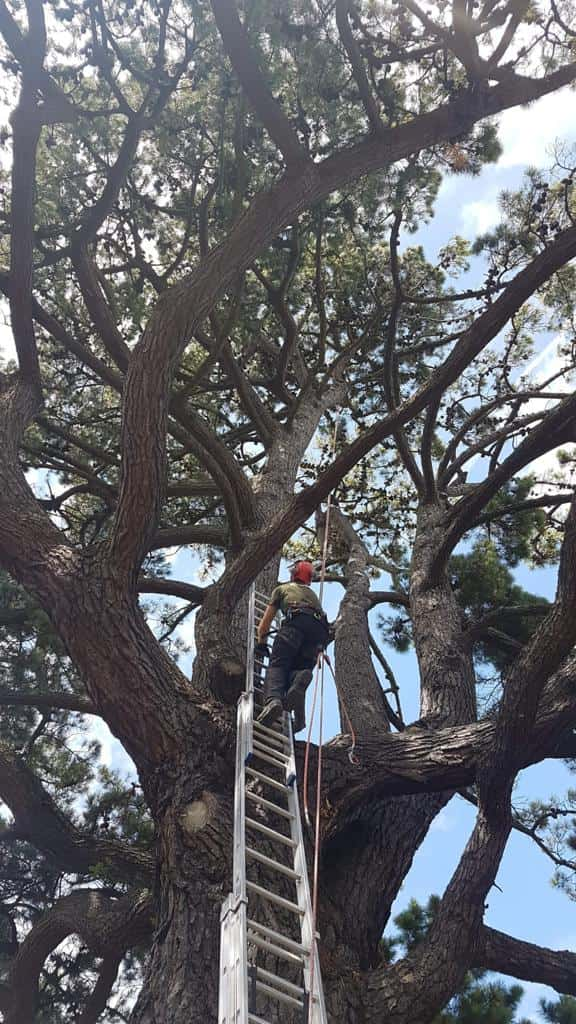Trees are among the most valuable features of any landscape — they enhance natural beauty, provide shade, and support wildlife. However, when a tree becomes unstable or diseased, it can quickly transform from an asset into a serious safety risk. Knowing when it’s time to consider felling is essential for protecting your property and those around it. At Sawbridgeworth Tree Surgeons, we specialise in identifying and managing hazardous trees across Sawbridgeworth and Hertfordshire, ensuring safety while preserving the health of your outdoor environment wherever possible.
Understanding the Risks of Dangerous Trees
A dangerous tree is one that has structural weaknesses, decay, or damage that makes it likely to fall or shed large limbs. Even healthy-looking trees can hide internal problems that compromise their stability. Left unchecked, these trees can pose threats to buildings, vehicles, and anyone nearby — particularly during strong winds or heavy rainfall.
Regular tree inspections and early intervention are the best ways to minimise risk. Professional tree surgeons, such as the team at Sawbridgeworth Tree Surgeons, are trained to recognise subtle signs of instability that may not be visible to the untrained eye.
Common Warning Signs That a Tree May Be Dangerous
1. Significant Leaning or Sudden Change in Angle
While some trees naturally grow at an angle, a sudden or increased lean is often a warning sign of instability. This can be caused by shifting soil, root damage, or internal decay. If a tree begins to lean noticeably after a storm or prolonged rain, it may indicate that its roots are no longer securely anchored.
2. Visible Cracks or Splits in the Trunk
Cracks or open wounds in a tree’s trunk can compromise its structure. Deep fissures or cavities weaken the wood and make the tree more likely to snap or split during high winds. Horizontal or vertical cracks near the base are especially concerning, as they often suggest serious internal damage.
3. Dead or Falling Branches
Branches that regularly fall, or sections of the canopy that appear lifeless, may indicate disease or decay. Dead limbs not only make the tree less stable but also present an immediate danger if they fall unexpectedly. The presence of dry, brittle branches high in the canopy is often one of the first visible indicators of a declining tree.
4. Root Damage or Lifting Soil
The roots are a tree’s foundation. If they are damaged by construction, soil compaction, or fungal infection, the entire tree may become unstable. Signs of root problems include:
- Lifting or cracking soil around the base of the tree
- Exposed or decaying roots
- Fungal growth, such as mushrooms or bracket fungi, near the trunk base
Root rot is particularly serious because it undermines the tree’s ability to remain upright, even if the upper parts still appear healthy.
5. Fungal Growth and Decay
The presence of fungi or conks on the bark or around the base often signals decay within the wood. While not all fungal species are harmful, many feed on internal tissues, leading to hollowing or weakening of the trunk. When structural strength is compromised, felling may be the only safe option.
6. Cavities or Hollow Sections
A hollow trunk doesn’t automatically mean a tree is unsafe, but if the hollowing is extensive or located near the base, it can greatly reduce structural stability. Large cavities also invite pests, moisture, and decay, further accelerating the deterioration process.
7. Signs of Disease or Infestation
Discolouration, peeling bark, oozing sap, or bore holes are often signs of disease or pest infestation. Insects such as bark beetles and borers, or fungal infections like ash dieback, can severely weaken a tree’s health and structure. Professional assessment from Sawbridgeworth Tree Surgeons ensures early identification and safe management of these problems.
Environmental Factors That Increase Risk
Even healthy trees can become hazardous under certain environmental conditions. Heavy storms, high winds, prolonged drought, or waterlogging can all contribute to instability. Trees growing on slopes, near rivers, or in compacted soil are also more susceptible to failure due to root stress and erosion.
In built-up areas like Sawbridgeworth, trees positioned close to homes, roads, or power lines require extra attention. If a large tree shows signs of weakness in such locations, professional evaluation and possible felling become critical to avoid damage or injury.
When Felling Becomes Necessary
Felling is always considered a last resort — it’s preferable to preserve trees whenever possible through pruning, crown reduction, or stabilisation techniques. However, if a tree poses a genuine danger or cannot recover from disease or decay, felling may be the safest and most responsible option.
At Sawbridgeworth Tree Surgeons, our specialists carry out detailed assessments before making any recommendations. We examine the tree’s health, stability, and proximity to surrounding structures to determine whether targeted pruning or full removal is appropriate. Our professional felling services ensure controlled and safe removal, preventing damage to nearby properties or landscapes.
The Importance of Professional Assessment
Attempting to judge a tree’s safety without expert knowledge can be risky. Some trees may appear healthy externally while suffering from significant internal decay. Others might look unstable but are structurally sound. A professional tree surgeon uses experience, specialist tools, and advanced techniques to evaluate each situation accurately.
By working with Sawbridgeworth Tree Surgeons, property owners in Sawbridgeworth and Hertfordshire can be confident their trees are inspected, managed, and, if necessary, removed safely and efficiently.
Maintaining Safety Through Preventative Care
Preventing trees from becoming dangerous in the first place is the best long-term approach. Regular maintenance, such as pruning and inspections, helps identify potential issues before they escalate. Keeping trees healthy through appropriate care ensures they continue to enhance your property while remaining structurally sound.
Conclusion
Recognising the signs of a dangerous tree is vital for maintaining safety and protecting your property. Leaning trunks, dead limbs, root damage, or fungal decay all indicate it may be time for professional intervention — and possibly felling. Sawbridgeworth Tree Surgeons provides expert tree assessment, maintenance, and felling services throughout Sawbridgeworth and Hertfordshire, helping homeowners manage their trees responsibly and safely.
Call us on: 01279 967 990
Click here to find out more about Sawbridgeworth Tree Surgeons
Click here to complete our contact form and see how we can help with your tree care needs.

